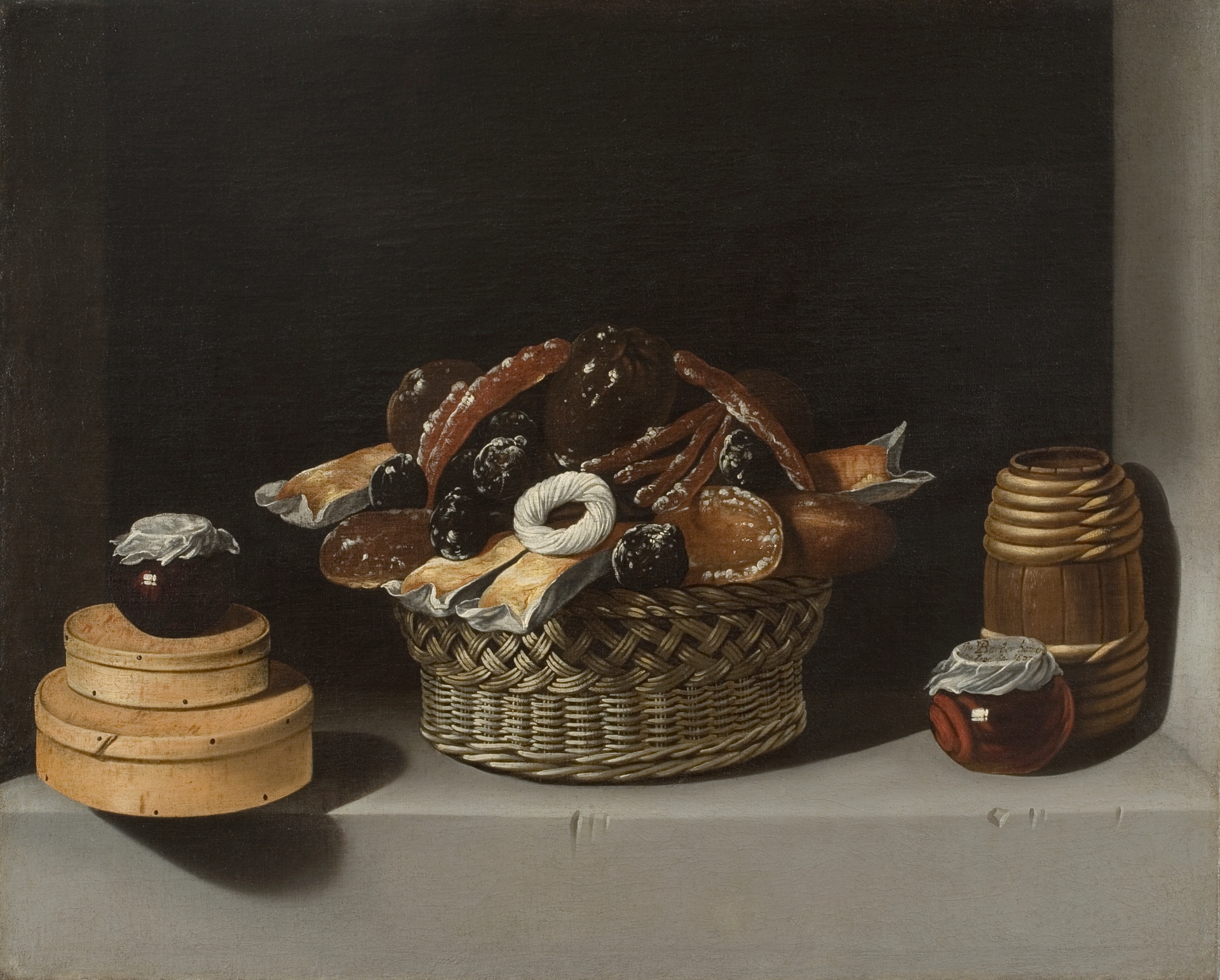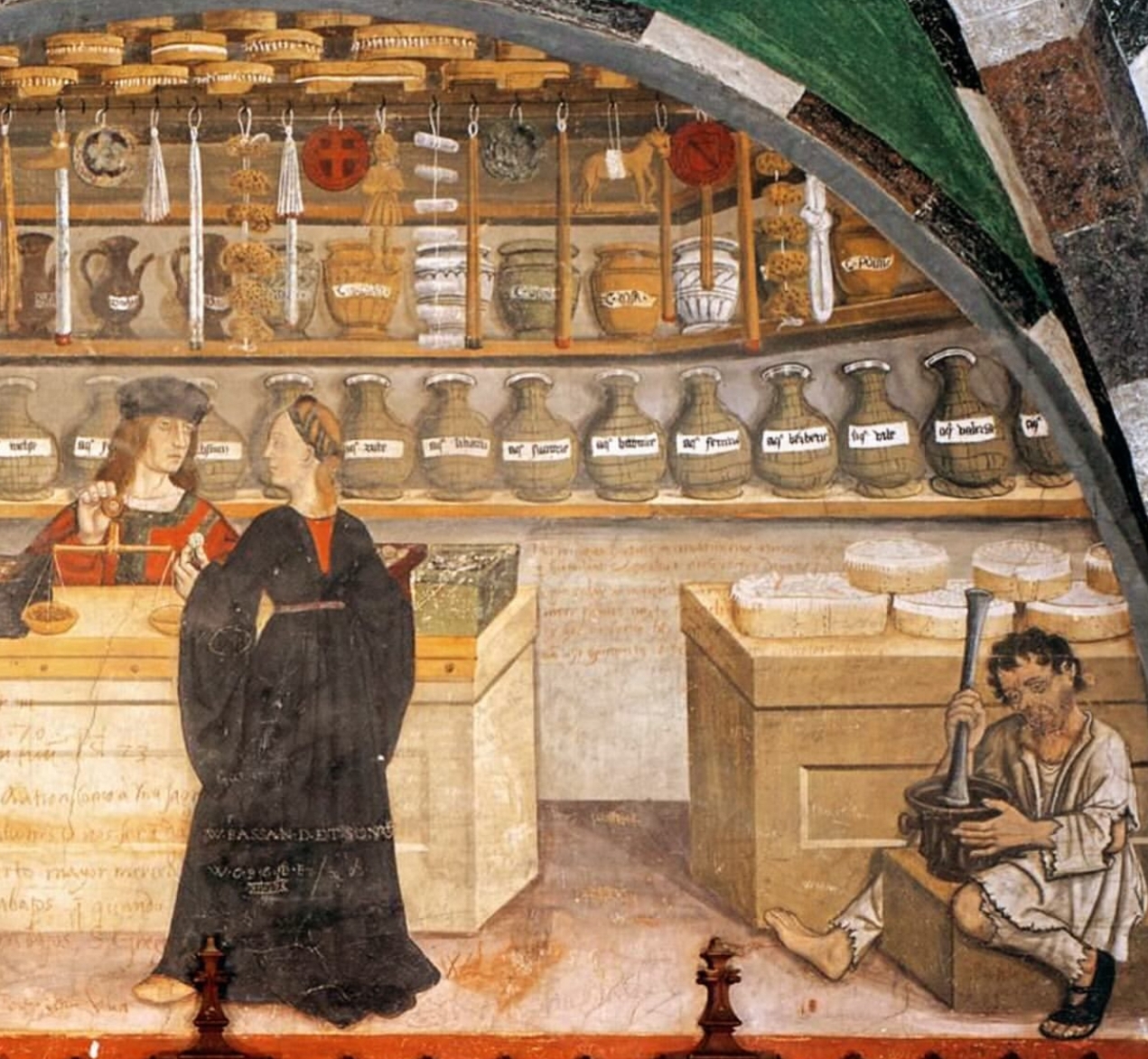Sweetmeats

For everie morning when thou rose,
I lent thee dainties orderly:
To cheare thy stomack from all woes,
and yet thou wouldst not love me.
Made by Ivan Day
In addition to all the gifts of clothing and accessories, Greensleeves is sent daily offerings of ‘dainties’ or sweetmeats.

Juan van der Hamen y León: Still-Life with a Basket and Sweetmeats, 1622. Museo del Prado
It is likely that the dainties gifted would have been beautifully presented, most often in a round or
oval wooden box lined and trimmed with paper. These sweetmeats may have been comfits of
anise, fennel or caraway, all being carminatives. But perhaps also quince paste or some other
preparation made from this fruit - quidoniack, quince knots, marmalade hearts etc. All these
preparations were considered “to cheare the stomach from all woes”, but were also popularly
thought to be ‘restoratives’, arousing amour and a desire for venery (not hunting). Candied
eryngo roots were considered the most powerful of all these dainties.

Anonymous: fresco of an apothecary shop, with boxes for sweetmeats on the table to the right, and on the top shelf. c1500.
The boxes these dainties were packed in were pretty much the same all over Europe and could
be bought ready-packed from the apothecary as well as the comfitmaker, whose trades were
often synonymous. In England, they appear on confectionery bills and receipts as bane boxes.
Somehow, despite these daily gifts, Greensleeves remains resistant to her would-be lover’s
amorous hints.

